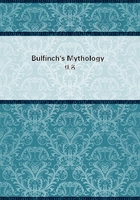
第149章
Of the statues made by the ancients themselves to represent their greater deities, a few have been already commented on. But it must not be thought that these splendid examples of plastic art, the Olympian Jupiter and the Athene of the Parthenon, represent the earliest attempts of the Greeks to give form to their myths in sculpture. Our most primitive sources of knowledge of much of Greek mythology are the Homeric poems, where the stories of Achilles and Ulysses have already taken on a poetic form, almost the highest conceivable. But in the other arts, Greek genius lagged behind. At the time when the Homeric poems were written, we find no traces of columned temples or magnificent statues.
Scarcely were the domestic arts sufficiently advanced to allow the poet to describe dwellings glorious enough for his heroes to live in, or articles of common utility fit for their use. Of the two most famous works of art mentioned in the Iliad we must think of the statue of Athene at Troy (the Palladium) as a rude carving perhaps of wood, the arms of the goddess separated from the body only enough to allow her to hold the lance and spindle, which were the signs of her divinity. The splendor of the shield of Achilles must be attributed largely to the rich imagination of the poet.
Other works of art of this primitive age we know from descriptions in later classical writers. They attributed the rude statues which had come down to them to Daedalus and his pupils, and beheld them with wonder at their uncouth ugliness.
It was long thought that these beginnings of Greek sculpture were to be traced to Egypt, but now-a-days scholars are inclined to take a different view. Egyptian sculpture was closely allied to architecture; the statues were frequently used for the columns of temples. Thus sculpture was subordinated to purely mechanical principles, and human figures were represented altogether in accordance with established conventions. Greek sculpture, on the contrary, even in its primitive forms was eminently natural, capable of developing a high degree of realism. From the first it was decorative in character, and this left the artist free to execute in his own way, provided only that the result should be in accordance with the highest type of beauty which he could conceive. An example of this early decorative art was the chest of Kypselos, on which stories from Homer were depicted in successive bands, the reliefs being partly inlaid with gold and ivory.
>From the sixth century before Christ date three processes of great importance in the development of sculpture; the art of casting in bronze, the chiselling of marble, and the inlaying of gold and ivory on wood (chryselephantine work). As early Greek literature developed first among the island Greeks, so the invention of these three methods of art must br attributed to the colonists away from the original Hellas. To the Samians is probably due the invention of bronze casting, to the Chians the beginning of sculpture in marble. This latter development opened to Greek sculpture its great future. Marble work was carried on by a race of artists beginning with Melas in the seventh century and coming down to Boupalos and Athenis, the sons of Achermos, whose works survived to the time of Augustus. Chryselephantine sculpture began in Crete.
Among the earliest of the Greek sculptors whose names have come down to us was Canachos, the Sicyonian. His masterpiece was the Apollo Philesios, in bronze, made for the temple of Didymas. The statue no longer exists, but there are a number of ancient monuments which may be taken as fairly close copies of it, or at least as strongly suggestive of the style of Canachos, among which are the Payne-Knight Apollo at the British Museum, and the Piombino Apollo at the Louvre. In this latter statue the god stands erect with the left foot slightly advanced, and the hands outstretched. The socket of the eye is hollow and was probably filled with some bright substance. Canachos was undoubtedly an innovator, and in the stronger modelling of the head and neck, the more vigorous posture of the body of his statue, he shows an advance on the more conventional and limited art of his generation.
As Greek sculpture progressed, schools of artists arose in various cities, dependent usually for their fame on the ability of some individual sculptor. "Among these schools, those of Aegina and Athens are the most important. Of the former school the works of Onatus are by far the most notable.
Onatus was a contemporary of Canachos, and reached the height of his fame in the middle of the fifth century before Christ. His most famous work was the scene where the Greek heroes draw lots for an opponent to Hector. It is not certain whether Onatus sculptured the groups which adorned the pediments of the temple of Athena at Aegina, groups now in the Glyptothek at Munich, but certainly these famous statues are decidedly in his style. Both pediments represent the battle over the body of Patroclus. The east pediment shows the struggle between Heracles and Laomedon.